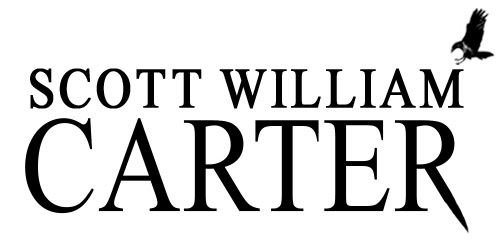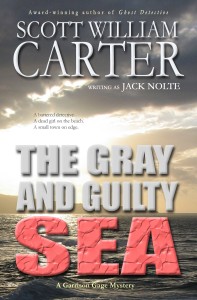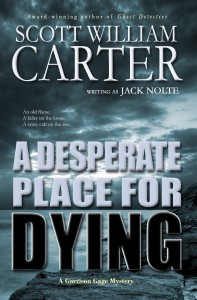Three blog posts in a week? That’s some kind of record for me. This is a longish post, but if you’re a fan of the Garrison Gage books, or why a writer might choose to write under a pen name, you might find this interesting.
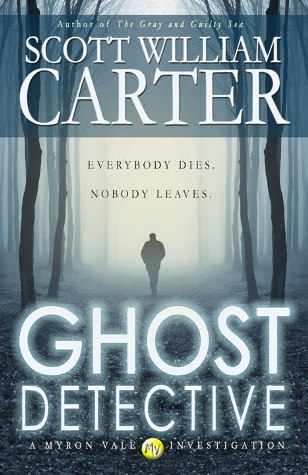 A couple days ago, when I wrote about my upcoming novel, Ghost Detective, I mentioned that I’m doing a little bit of recalibrating with my writing career. Well, republishing my Jack Nolte books under my own name is a big part of that process.
A couple days ago, when I wrote about my upcoming novel, Ghost Detective, I mentioned that I’m doing a little bit of recalibrating with my writing career. Well, republishing my Jack Nolte books under my own name is a big part of that process.
Why go to all the trouble, and why did I publish those books under a pseudonym in the first place? Well, at the tail end of 2010, when I first indie-published The Gray and Guilty Sea, both Big Publishing and my own writing career were in a very different place. I’d published my first young adult novel with Simon and Schuster and was working on a second, plus had an inkling to write a middle grade fantasy involving the untold story of Pinocchio (which turned out to be the book Wooden Bones.) Although I’ve always been one of those writers who writes like he reads — all over the genre map — I was feeling like I was building toward something of a career as a young adult/children’s writer under my own name.
Now, you have to understand, this isn’t how I saw my writing career. I follow a simple motto when it comes to my writing, one that I actually have taped to my monitor as a daily reminder: Write your own favorite book. What I mean is, I try not to pigeonhole myself as a young adult writer or a children’s writer or a mystery writer or a science fiction writer or literary writer, though in my short career, you could already make the case that any one of those labels applies. I just try to write my own favorite book. I’m not saying I always succeed, but that’s the goal. I write stories that I want to read, hopefully ones that will stick with me long after the final page is written/read.
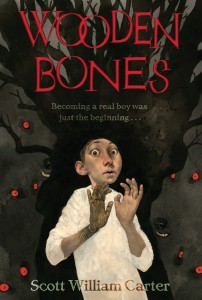 If I don’t try to write books that are my favorite books, how can I ever hope for them to be someone else’s?
If I don’t try to write books that are my favorite books, how can I ever hope for them to be someone else’s?
But back to 2010. There are many valid reasons to write under a pseudonym. You could do it because you don’t want people to know (anonymity) you write “that sort of thing,” whatever “that sort of thing” is. You could do it because you write across genres and you want to more clearly distinguish those books for readers (branding). But even if you don’t feel the need to write under a pseudonym for those two reasons, there was an even better one if you hoped to have a long and fruitful traditional publishing career: protecting your sales numbers.
If you wrote thrillers that were expected to move 100,000 units a book, you may not want to release that latest science fiction novel that’s only expected to sell 5000 under your own name. Especially in the days of the big box bookstores (days that are thankfully coming to an end), those sales numbers could determine how many copies of your next book the bookstore ordered. So some bean counter sees you only moved 5000 of your last book, not understanding genre expectations, and dramatically reduces your order for your next thriller.
Don’t think this happened? Oh, yes, it did, all the time, and it killed careers — unless the writer was willing to re-launch under a pseudonym. And of course, the smart writers, understanding this phenomena, wrote under pseudonyms from the get go. My friend Kristine Kathryn Rusch is one of the masters of this, writing award-winning science fiction under her own name, acclaimed mysteries as Kris Nelscott, and quirky paranormal romances as Kristine Grayson — and those are just three of her pen names! (And if you haven’t read her — any of version of her — you really should. She’s a fantastic.)
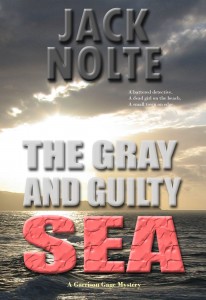
So for some of these reasons (branding, fear of poor sales hurting my career) and because nobody really knew what the future held for indie-published writers in 2010 (though it was looking promising), I decided to release The Gray and Guilty Sea under the pen name Jack Nolte.*
Honestly, I was unsure about the book, too. A writer’s self-confidence can already be an iffy thing, and this is a book that had failed to sell to traditional publishers. Granted, it did help land me one of the top literary agents in the business, and it did elicit some very glowing rejection letters, but the editors all passed on the book. The most common complaint was that they loved Garrison Gage but were hoping for a “bigger” story, with lots of “scope,” something like The Da Vinci Code. But I wasn’t writing that kind of book. I was writing a character book about a private investigator who “retires” to the Oregon Coast from New York after his wife is brutally killed in a mafia hit, and who, in the book’s opening page, stumbles upon a dead girl on the beach on an evening walk. It’s a regional mystery, heavy on the character, about guilt and redemption.
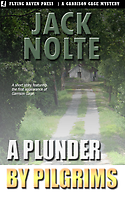 So I just stuck it out there with no fanfare, not even a mention on my own blog. I even put the book at 99 cents originally because I just didn’t care. I created a JackNolte.com website ( a site which, you’ll notice, now links back here) and treated Jack like he was a separate writer altogether.
So I just stuck it out there with no fanfare, not even a mention on my own blog. I even put the book at 99 cents originally because I just didn’t care. I created a JackNolte.com website ( a site which, you’ll notice, now links back here) and treated Jack like he was a separate writer altogether.
And an amazing thing happened. The book started to sell.
Not by the standards of Hugh Howey, Amanda Hocking, or Joe Konrath, you understand, but it was still selling eight to ten copies a day. I did publish a free short story, “A Plunder by Pilgrims,” a sort of prequel to the book, and I know for a fact that many readers discovered it that way, but otherwise I was doing no promotion at all. I raised my price to $1.99. Then $2.99. Then $3.99. The book continued to sell at about the same rate. I eventually raised it to $5.99, trying to position the book at the bottom end of traditionally-published books, and though the sales did slow down after a while, it had a very good two year run and continues to sell at a decent clip. I released a second book a year ago featuring Gage, A Desperate Place for Dying, and it has also sold well.
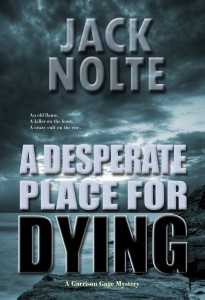
Which brings me to today. I’m just about to publish Ghost Detective, which I think readers of the Jack Nolte books may very well enjoy. I’m well into the third Garrison Gage novel, which, if the stars align, will be released later this year. Over the past few months, this whole pseudonym thing has been nagging me a great deal. It’s hard enough to build one name, and it’s doubly hard if you’re spreading your books among several. This has always been true, I guess, but it’s even more true now: The best way to build a career, today, and with indie publishing specficially, is to steadily release new, similar material. It’s not the only way, and it’s certainly not right for every writer, but it’s probably the most common method I’ve seen writers use to achieve success recently.
The one thing stopping me was this idea of branding. Though I’m trying to be a little more disciplined in the projects I select to write (part of the recalibration I mentioned), I can guarantee you that you will see other children’s fantasies, quirky young adult books, and other things that will continue to make me one of those writers who’s hard to pigeonhole. My muse, I like the guy, but he’s a bit schizophrenic, you see, and I’m afraid I’m stuck with him.
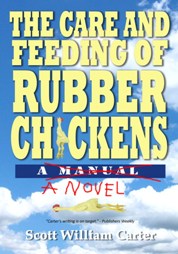 What if a parent who bought A Tale of Two Giants, one of my more gentle children’s fantasies, buys one of my grittier mysteries and is shocked at the profanity? Will I piss of a reader? Will I lose them?
What if a parent who bought A Tale of Two Giants, one of my more gentle children’s fantasies, buys one of my grittier mysteries and is shocked at the profanity? Will I piss of a reader? Will I lose them?
Well, maybe. And you know what? That’s okay. It’s also possible that a reader who enjoyed my quirky young adult book, The Care and Feeding of Rubber Chickens, may also be a fan of dark paranormal mysteries. I mean, I am, right? And by keeping it all under my own name, I make it easier for that reader, the one like me, to find all of my books. And there are lots of ways to brand books, from font style to cover image.
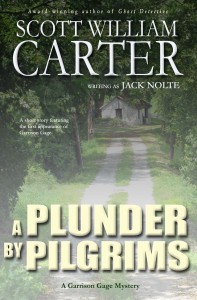
I’m also reminded of something a long-time pro said to me a few years ago. I think it may have been Kate Wilhem, though I can’t be sure, though it certainly seems like something she would say. When I asked what she thought about pseudonyms, she said, and I’m paraphrasing, “Well, I think readers are pretty smart. In fact, I think they’re smart enough to decide for themselves what they want to read.”
I thought that was pretty wise, even though I decided to ignore it. (For better or worse, I’m often ignoring advice people give me.) But now, I’ve pretty much come around to her point of view. Unless there’s a very good reason to write under a pseudonym — and there still are many — I’m going to be writing almost everything under my own name.
Thankfully, with indie publishing I was able to do this relatively easily. Here’s what I did over the last week:
- Add my own name to the online listings of the Jack Nolte books as a co-author
- Repackage the covers, dropping the Jack Nolte to a “writing as” subhead
- Direct all traffic from JackNolte.com to my own site.
- Publish updated versions of the paperbacks with new covers and interiors.
- Write this blog post, so Jack Nolte fans will know why I’m making this change.
This way I don’t lose any momentum from the Jack Nolte name, but I position myself so that when the third Gage book is released, I can just release it completely under my own name.
It was a bit of work, but it was worth it to me. I can’t deny that maybe a little bit of ego was involved, too. So sue me. My name is my brand. I don’t know what that brand is, exactly, except I can tell you this: You may not like everything I write, but you’ll always get my best effort. I hope that’s enough.
*In case you were wondering, Nolte is my mother’s maiden name, and “Jack” is a handle I used in the early days of the Internet with Usenet and public Bulletin Boards, when as a teenager I wanted to engage in online discussions but also wanted to protect my anonymity. Mostly, I think, because I was afraid the older kids would come to my house and beat me up.
